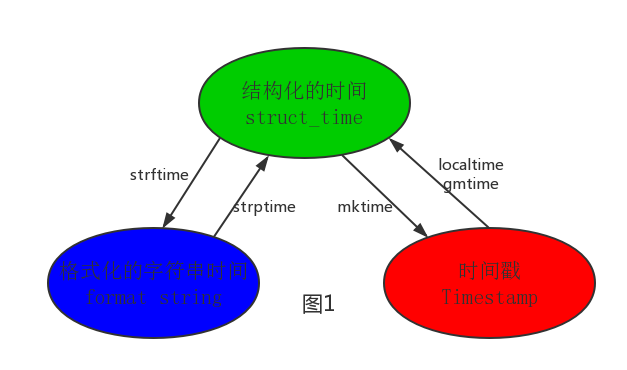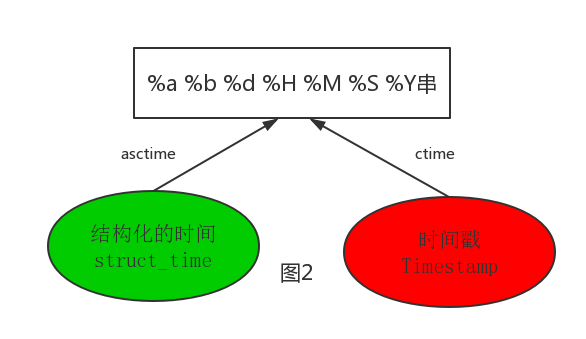Python常用模块(logging&re&时间&random&os&sys&shutil&序列化&configparser&&hashlib)
-
一. logging(日志模块)
-
二 .re模块
-
三. 时间模块
-
四. random模块
-
五. os模块
-
六. sys模块
-
七. shutil模块
-
八. 序列化模块(json&pickle&shelve)
-
九. XML模块
-
十. configparser模块
-
十一 hashlib模块
一. logging(日志模块)
1.1 日志级别
CRITICAL = 50 #FATAL ERROR = 40 WARNING = 30 #WARN INFO = 20 DEBUG = 10 NOTSET = 0 #不设置
#默认级别是warning,默认打印到终端 import logging logging.debug('调试debug') logging.info('消息info') logging.warning('警告warn') logging.error('错误error') logging.critical('严重critical') ''' WARNING:root:警告warn #root指的是日志名 ERROR:root:错误error CRITICAL:root:严重critical '''
1.2 为logging模块指定全局配置
使用logging.basicConfig()进行配置,针对所有logger有效,控制打印到文件中
import logging logging.basicConfig(filename='access.log', format='%(asctime)s - %(name)s - %(levelname)s -%(module)s: %(message)s', datefmt='%Y-%m-%d %H:%M:%S %p', level=10) logging.debug('调试debug') logging.info('消息info') logging.warning('警告warn') logging.error('错误error') logging.critical('严重critical')
可在logging.basicConfig()函数中可通过具体参数来更改logging模块默认行为,可用参数有 filename:用指定的文件名创建FiledHandler(后边会具体讲解handler的概念),这样日志会被存储在指定的文件中。 filemode:文件打开方式,在指定了filename时使用这个参数,默认值为“a”还可指定为“w”。 format:指定handler使用的日志显示格式。 datefmt:指定日期时间格式。 level:设置rootlogger(后边会讲解具体概念)的日志级别 stream:用指定的stream创建StreamHandler。可以指定输出到sys.stderr,sys.stdout或者文件,默认为sys.stderr。若同时列出了filename和stream两个参数,则stream参数会被忽略。 format参数中可能用到的格式化串: %(name)s Logger的名字 %(levelno)s 数字形式的日志级别 %(levelname)s 文本形式的日志级别 %(pathname)s 调用日志输出函数的模块的完整路径名,可能没有 %(filename)s 调用日志输出函数的模块的文件名 %(module)s 调用日志输出函数的模块名 %(funcName)s 调用日志输出函数的函数名 %(lineno)d 调用日志输出函数的语句所在的代码行 %(created)f 当前时间,用UNIX标准的表示时间的浮 点数表示 %(relativeCreated)d 输出日志信息时的,自Logger创建以 来的毫秒数 %(asctime)s 字符串形式的当前时间。默认格式是 “2003-07-08 16:49:45,896”。逗号后面的是毫秒 %(thread)d 线程ID。可能没有 %(threadName)s 线程名。可能没有 %(process)d 进程ID。可能没有 %(message)s用户输出的消息
这种用法无法实现既往文件打印,又往终端打印
1.3 logging模块的Formatter,Handler,Logger,Filter对象
import logging #logger对象:负责产生日志,然后交给Filter过滤,然后交给不同的Handler输出 logger=logging.getLogger(__file__) #Filter对象:不常用,略 #Handler对象:接收logger传来的日志,然后控制输出 handler1=logging.FileHandler('t1.log') #打印到文件t1.log handler2=logging.FileHandler('t2.log') #打印到文件t2.log handler3=logging.StreamHandler() #打印到终端 #ormatter对象:日志格式 formater1=logging.Formatter( '%(asctime)s - %(name)s - %(levelname)s -%(module)s: %(message)s', datefmt='%Y-%m-%d %H:%M:%S %p', ) formater2=logging.Formatter( '%(asctime)s : %(message)s', datefmt='%Y-%m-%d %H:%M:%S %p', ) formater3=logging.Formatter( '%(name)s %(message)s', ) #为Handler对象绑定格式 handler1.setFormatter(formater1) handler2.setFormatter(formater2) handler3.setFormatter(formater3) #设置日志级别 handler1.setLevel(20) handler2.setLevel(30) handler3.setLevel(30) #将Handler添加给logger并设置日志级别 logger.addHandler(handler1) logger.addHandler(handler2) logger.addHandler(handler3) logger.setLevel(10) #测试: logger.debug('debug') logger.info('info') logger.warning('warning') logger.error('error') logger.critical('critical')
注意:
logger是第一级过滤,然后才能到handler,我们可以给logger和handler同时设置level

#可以利用getlogger()中的'.'进行多个logger的继承 #子代logging产生日志,父代也产生 logger1=logging.getLogger('root') logger2=logging.getLogger('root.child1') logger3=logging.getLogger('root.child1.child2')
1.4 logging配置文件
""" logging配置 """ import os import logging.config # 定义三种日志输出格式 开始 standard_format = '[%(asctime)s][%(threadName)s:%(thread)d][task_id:%(name)s][%(filename)s:%(lineno)d]' \ '[%(levelname)s][%(message)s]' #其中name为getlogger指定的名字 simple_format = '[%(levelname)s][%(asctime)s][%(filename)s:%(lineno)d]%(message)s' id_simple_format = '[%(levelname)s][%(asctime)s] %(message)s' # 定义日志输出格式 结束 logfile_dir = os.path.dirname(os.path.abspath(__file__)) # log文件的目录 logfile_name = 'all2.log' # log文件名 # 如果不存在定义的日志目录就创建一个 if not os.path.isdir(logfile_dir): os.mkdir(logfile_dir) # log文件的全路径 logfile_path = os.path.join(logfile_dir, logfile_name) # log配置字典 LOGGING_DIC = { 'version': 1, 'disable_existing_loggers': False, 'formatters': { 'standard': { 'format': standard_format }, 'simple': { 'format': simple_format }, }, 'filters': {}, 'handlers': { #打印到终端的日志 'console': { 'level': 'DEBUG', 'class': 'logging.StreamHandler', # 打印到屏幕 'formatter': 'simple' }, #打印到文件的日志,收集info及以上的日志 'default': { 'level': 'DEBUG', 'class': 'logging.handlers.RotatingFileHandler', # 保存到文件 'formatter': 'standard', 'filename': logfile_path, # 日志文件 'maxBytes': 1024*1024*5, # 日志大小 5M 'backupCount': 5, 'encoding': 'utf-8', # 日志文件的编码,再也不用担心中文log乱码了 }, }, 'loggers': { #logging.getLogger(__name__)拿到的logger配置 '': { 'handlers': ['default', 'console'], # 这里把上面定义的两个handler都加上,即log数据既写入文件又打印到屏幕 'level': 'DEBUG', 'propagate': True, # 向上(更高level的logger)传递 }, }, } def load_my_logging_cfg(): logging.config.dictConfig(LOGGING_DIC) # 导入上面定义的logging配置 logger = logging.getLogger(__name__) # 生成一个log实例 logger.info('It works!') # 记录该文件的运行状态 if __name__ == '__main__': load_my_logging_cfg() logging配置文件
from conf import settings import logging.config import logging def get_logger(name): logging.config.dictConfig(settings.LOGGING_DIC) logger=logging.getLogger(name) return logger
二 .re模块
2.1 正则
正则就是用一些特殊含义的符号组合到一起(称为正则表达式)来描述字符或者字符串的方法。或者说:正则就是藐视一类事物的规则。
在Python中,它内嵌在Python中,并通过re模块实现。正则表达式模式被编译成一系列的字节码,然后由用C编写的匹配引擎执行。
2.2 常用匹配模式

#\w 匹配字母数字下划线 print(re.findall('\w','alex say hello alex sb 123_ %*'))
#\W 匹配非字母数字下划线 print(re.findall('\W','alex say hello alex sb 123_ %*'))
#\s匹配任意空白字符[\t\n\r\f] print(re.findall('\s','alex say he\n \tllo alex sb 123_ %*'))
#\S匹配任意非空字符 print(re.findall('\S','alex say he\n \tllo alex sb 123_ %*'))
#\D匹配非数字 print(re.findall('\D','alex say he\n \tllo alex sb 123_ %'))
#\A寻找开头等同于‘^’ print(re.findall('\Ahantao','hantao say hello 123_hantao'))
#\Z寻找末尾,等同于‘$’ print(re.findall('hantao\Z','hantao say hello 123_hantao'))
#重复匹配:. ? * + {} #.:匹配任意字符,除了换行符 print(re.findall('a.c','a1c a%c abc acccc')) #.:加re.S或re.DOTALLD可匹配换行符 print(re.findall('a.c','a1c a%c abc acccc a\nc',re.S)) #?:左边那个字符出现0次或者1次 print(re.findall('ab?','ab ab a abbb')) #*:左边那个字符出现0次或者无穷次 print(re.findall('ab*','ab ab a abbb')) #+:左边那个字符出现1次或者无穷次 print(re.findall('ab+','ab ab a abbb')) #{n,m}:左边那个字符出现n,m次 print(re.findall('ab{3}','ab ab a abbb')) print(re.findall('ab{3,}','ab ab a abbb abbbbbb')) #.* 默认贪婪匹配 .*?非贪婪匹配 print(re.findall('a.*c','a1c a%c abc acccc')) print(re.findall('a.*?c','a1c a%c abc acccc'))
#()分组 print(re.findall('<imag href="(.*)"/','<h1>hello</h1><a href="http://www.baidu.com"></a><imag href="http://www.baidu.com/a.jpg"/>')) #(?:)分组并全部保留, print(re.findall('<imag href="(?:.*)"/','<h1>hello</h1><a href="http://www.baidu.com"></a><imag href="http://www.baidu.com/a.jpg"/>'))
#|或者 print(re.findall('compan(?:y|ies)','too many companies have gone bankrupt,and next one is my company'))
常用正则表达式大全
http://www.cnblogs.com/zxin/archive/2013/01/26/2877765.html
2.3 re模块的常用方法
import re #1 print(re.findall('e','alex make love') ) #['e', 'e', 'e'],返回所有满足匹配条件的结果,放在列表里 #2 print(re.search('e','alex make love').group()) #e,只到找到第一个匹配然后返回一个包含匹配信息的对象,该对象可以通过调用group()方法得到匹配的字符串,如果字符串没有匹配,则返回None。 #3 print(re.match('e','alex make love')) #None,同search,不过在字符串开始处进行匹配,完全可以用search+^代替match #4 print(re.split('[ab]','abcd')) #['', '', 'cd'],先按'a'分割得到''和'bcd',再对''和'bcd'分别按'b'分割 #5 print('===>',re.sub('a','A','alex make love')) #===> Alex mAke love,不指定n,默认替换所有 print('===>',re.sub('a','A','alex make love',1)) #===> Alex make love print('===>',re.sub('a','A','alex make love',2)) #===> Alex mAke love print('===>',re.sub('^(\w+)(.*?\s)(\w+)(.*?\s)(\w+)(.*?)$',r'\5\2\3\4\1','alex make love')) #===> love make alex print('===>',re.subn('a','A','alex make love')) #===> ('Alex mAke love', 2),结果带有总共替换的个数 #6 obj=re.compile('\d{2}') print(obj.search('abc123eeee').group()) #12 print(obj.findall('abc123eeee')) #['12'],重用了obj
re.findall(r'<.*?>.*?</.*?>','<h1>hello</h1>') re.findall(r'<(.*?)>.*?</(.*?)>','<h1>hello</h1>') re.findall(r'<(.*?)>.*?</(\1)>','<h1>hello</h1>') re.findall(r'<(?P<k>.*?)>.*?</(?P=k)>','<h1>hello</h1>')
三. 时间模块
3.1 三种时间表示
在Python中,通常有这几种方式来表示时间:
- 时间戳(timestamp):通常来说,时间戳表示的是从1970年1月1日00:00:00开始按秒计算的偏移量。我们运行“type(time.time())”,返回的是float类型。
- 格式化的时间字符串(Format String)
- 结构化的时间(struct_time):struct_time元组共有9个元素共九个元素:(年,月,日,时,分,秒,一年中第几周,一年中第几天,夏令时)
import time print(time.time()) # 时间戳:1487130156.419527 print(time.strftime("%Y-%m-%d %X")) #格式化的时间字符串:'2017-02-15 11:40:53' print(time.localtime()) #本地时区的struct_time print(time.gmtime()) #UTC时区的struct_time

%a Locale’s abbreviated weekday name. %A Locale’s full weekday name. %b Locale’s abbreviated month name. %B Locale’s full month name. %c Locale’s appropriate date and time representation. %d Day of the month as a decimal number [01,31]. %H Hour (24-hour clock) as a decimal number [00,23]. %I Hour (12-hour clock) as a decimal number [01,12]. %j Day of the year as a decimal number [001,366]. %m Month as a decimal number [01,12]. %M Minute as a decimal number [00,59]. %p Locale’s equivalent of either AM or PM. (1) %S Second as a decimal number [00,61]. (2) %U Week number of the year (Sunday as the first day of the week) as a decimal number [00,53]. All days in a new year preceding the first Sunday are considered to be in week 0. (3) %w Weekday as a decimal number [0(Sunday),6]. %W Week number of the year (Monday as the first day of the week) as a decimal number [00,53]. All days in a new year preceding the first Monday are considered to be in week 0. (3) %x Locale’s appropriate date representation. %X Locale’s appropriate time representation. %y Year without century as a decimal number [00,99]. %Y Year with century as a decimal number. %z Time zone offset indicating a positive or negative time difference from UTC/GMT of the form +HHMM or -HHMM, where H represents decimal hour digits and M represents decimal minute digits [-23:59, +23:59]. %Z Time zone name (no characters if no time zone exists). %% A literal '%' character. 格式化字符串的时间格式
3.2 时间方式的转换

#--------------------------按图1转换时间 # localtime([secs]) # 将一个时间戳转换为当前时区的struct_time。secs参数未提供,则以当前时间为准。 time.localtime() time.localtime(1473525444.037215) # gmtime([secs]) 和localtime()方法类似,gmtime()方法是将一个时间戳转换为UTC时区(0时区)的struct_time。 # mktime(t) : 将一个struct_time转化为时间戳。 print(time.mktime(time.localtime()))#1473525749.0 # strftime(format[, t]) : 把一个代表时间的元组或者struct_time(如由time.localtime()和 # time.gmtime()返回)转化为格式化的时间字符串。如果t未指定,将传入time.localtime()。如果元组中任何一个 # 元素越界,ValueError的错误将会被抛出。 print(time.strftime("%Y-%m-%d %X", time.localtime()))#2016-09-11 00:49:56 # time.strptime(string[, format]) # 把一个格式化时间字符串转化为struct_time。实际上它和strftime()是逆操作。 print(time.strptime('2011-05-05 16:37:06', '%Y-%m-%d %X')) #time.struct_time(tm_year=2011, tm_mon=5, tm_mday=5, tm_hour=16, tm_min=37, tm_sec=6, # tm_wday=3, tm_yday=125, tm_isdst=-1) #在这个函数中,format默认为:"%a %b %d %H:%M:%S %Y"。

#--------------------------按图2转换时间 # asctime([t]) : 把一个表示时间的元组或者struct_time表示为这种形式:'Sun Jun 20 23:21:05 1993'。 # 如果没有参数,将会将time.localtime()作为参数传入。 print(time.asctime())#Sun Sep 11 00:43:43 2016 # ctime([secs]) : 把一个时间戳(按秒计算的浮点数)转化为time.asctime()的形式。如果参数未给或者为 # None的时候,将会默认time.time()为参数。它的作用相当于time.asctime(time.localtime(secs))。 print(time.ctime()) # Sun Sep 11 00:46:38 2016 print(time.ctime(time.time())) # Sun Sep 11 00:46:38 2016
3.3 datetime模块
#时间加减 import datetime # print(datetime.datetime.now()) #返回 2016-08-19 12:47:03.941925 #print(datetime.date.fromtimestamp(time.time()) ) # 时间戳直接转成日期格式 2016-08-19 # print(datetime.datetime.now() ) # print(datetime.datetime.now() + datetime.timedelta(3)) #当前时间+3天 # print(datetime.datetime.now() + datetime.timedelta(-3)) #当前时间-3天 # print(datetime.datetime.now() + datetime.timedelta(hours=3)) #当前时间+3小时 # print(datetime.datetime.now() + datetime.timedelta(minutes=30)) #当前时间+30分 # # c_time = datetime.datetime.now() # print(c_time.replace(minute=3,hour=2)) #时间替换 datetime模块
四. random模块
import random print(random.random())#(0,1)----float 大于0且小于1之间的小数 print(random.randint(1,3)) #[1,3] 大于等于1且小于等于3之间的整数 print(random.randrange(1,3)) #[1,3) 大于等于1且小于3之间的整数 print(random.choice([1,'23',[4,5]]))#1或者23或者[4,5] print(random.sample([1,'23',[4,5]],2))#列表元素任意2个组合 print(random.uniform(1,3))#大于1小于3的小数,如1.927109612082716 item=[1,3,5,7,9] random.shuffle(item) #打乱item的顺序,相当于"洗牌" print(item)
五. os模块
os模块是与操作系统交互的一个接口
os.getcwd() 获取当前工作目录,即当前python脚本工作的目录路径 os.chdir("dirname") 改变当前脚本工作目录;相当于shell下cd os.curdir 返回当前目录: ('.') os.pardir 获取当前目录的父目录字符串名:('..') os.makedirs('dirname1/dirname2') 可生成多层递归目录 os.removedirs('dirname1') 若目录为空,则删除,并递归到上一级目录,如若也为空,则删除,依此类推 os.mkdir('dirname') 生成单级目录;相当于shell中mkdir dirname os.rmdir('dirname') 删除单级空目录,若目录不为空则无法删除,报错;相当于shell中rmdir dirname os.listdir('dirname') 列出指定目录下的所有文件和子目录,包括隐藏文件,并以列表方式打印 os.remove() 删除一个文件 os.rename("oldname","newname") 重命名文件/目录 os.stat('path/filename') 获取文件/目录信息 os.sep 输出操作系统特定的路径分隔符,win下为"\\",Linux下为"/" os.linesep 输出当前平台使用的行终止符,win下为"\r\n",Linux下为"\n" os.pathsep 输出用于分割文件路径的字符串 win下为;,Linux下为: os.name 输出字符串指示当前使用平台。win->'nt'; Linux->'posix' os.system("bash command") 运行shell命令,直接显示 os.environ 获取系统环境变量 os.path.abspath(path) 返回path规范化的绝对路径 os.path.split(path) 将path分割成目录和文件名二元组返回 os.path.dirname(path) 返回path的目录。其实就是os.path.split(path)的第一个元素 os.path.basename(path) 返回path最后的文件名。如何path以/或\结尾,那么就会返回空值。即os.path.split(path)的第二个元素 os.path.exists(path) 如果path存在,返回True;如果path不存在,返回False os.path.isabs(path) 如果path是绝对路径,返回True os.path.isfile(path) 如果path是一个存在的文件,返回True。否则返回False os.path.isdir(path) 如果path是一个存在的目录,则返回True。否则返回False os.path.join(path1[, path2[, ...]]) 将多个路径组合后返回,第一个绝对路径之前的参数将被忽略 os.path.getatime(path) 返回path所指向的文件或者目录的最后存取时间 os.path.getmtime(path) 返回path所指向的文件或者目录的最后修改时间 os.path.getsize(path) 返回path的大小
os.path.normcase('c:/windows\\system32\\') 在Linux和Mac平台上,该函数会原样返回path,在windows平台上会将路径中所有字符转换为小写,并将所有斜杠转换为饭斜杠。
os.path.normpath('c://windows\\System32\\../Temp/') 规范化路径,如..和/
#路径处理 #方式一 BASE_DIR=os.path.dirname(os.path.dirname(os.path.abspath(__file__))) #方式二 BASE_DIR=os.path.normpath(os.path.join( os.path.abspath(__file__), os.pardir, os.pardir ))
六. sys模块
sys.argv 命令行参数List,第一个元素是程序本身路径
sys.exit(n) 退出程序,正常退出时exit(0)
sys.version 获取Python解释程序的版本信息
sys.maxint 最大的Int值
sys.path 返回模块的搜索路径,初始化时使用PYTHONPATH环境变量的值
sys.platform 返回操作系统平台名称

#=========知识储备========== #进度条的效果 [# ] [## ] [### ] [#### ] #指定宽度 print('[%-15s]' %'#') print('[%-15s]' %'##') print('[%-15s]' %'###') print('[%-15s]' %'####') #打印% print('%s%%' %(100)) #第二个%号代表取消第一个%的特殊意义 #可传参来控制宽度 print('[%%-%ds]' %50) #[%-50s] print(('[%%-%ds]' %50) %'#') print(('[%%-%ds]' %50) %'##') print(('[%%-%ds]' %50) %'###') #=========实现打印进度条函数========== import sys import time import random def progress(percent,width=50): if percent >= 1: percent=1 show_str=('[%%-%ds]' %width) %(int(width*percent)*'#') print('\r%s %d%%' %(show_str,int(100*percent)),file=sys.stdout,flush=True,end='') #=========应用========== data_size=1025 recv_size=0 while recv_size < data_size: time.sleep(random.random) #模拟数据的传输延迟 recv_size+=1024 #每次收1024 percent=recv_size/data_size #接收的比例 progress(percent,width=70) #进度条的宽度70 打印进度条
七. shutil模块
高级的 文件、文件夹、压缩包 处理模块
shutil.copyfileobj(fsrc, fdst[, length]) 将文件内容拷贝到另一个文件中 shutil.copyfileobj(open('old.xml','r'), open('new.xml', 'w'))
shutil.copyfile(src, dst) 拷贝文件 shutil.copyfile('f1.log', 'f2.log') #目标文件无需存在
shutil.copymode(src, dst) 仅拷贝权限。内容、组、用户均不变 shutil.copymode('f1.log', 'f2.log') #目标文件必须存在
shutil.copystat(src, dst) 仅拷贝状态的信息,包括:mode bits, atime, mtime, flags shutil.copystat('f1.log', 'f2.log') #目标文件必须存在
shutil.copy(src, dst) 拷贝文件和权限 shutil.copy('f1.log', 'f2.log')
shutil.copy2(src, dst) 拷贝文件和状态信息 shutil.copy2('f1.log', 'f2.log')
shutil.ignore_patterns(*patterns) shutil.copytree(src, dst, symlinks=False, ignore=None) 递归的去拷贝文件夹 shutil.copytree('folder1', 'folder2', ignore=shutil.ignore_patterns('*.pyc', 'tmp*')) #目标目录不能存在,注意对folder2目录父级目录要有可写权限,ignore的意思是排除
shutil.copytree('f1', 'f2', symlinks=True, ignore=shutil.ignore_patterns('*.pyc', 'tmp*'))
'''
通常的拷贝都把软连接拷贝成硬链接,即对待软连接来说,创建新的文件
'''
shutil.rmtree(path[, ignore_errors[, onerror]]) 递归的去删除文件 shutil.rmtree('folder1')
shutil.move(src, dst) 递归的去移动文件,它类似mv命令,其实就是重命名 shutil.move('folder1', 'folder3')
shutil.make_archive(base_name, format,...) 创建压缩包并返回文件路径,例如:zip、tar 创建压缩包并返回文件路径,例如:zip、tar base_name: 压缩包的文件名,也可以是压缩包的路径。只是文件名时,则保存至当前目录,否则保存至指定路径, 如 data_bak =>保存至当前路径 如:/tmp/data_bak =>保存至/tmp/ format: 压缩包种类,“zip”, “tar”, “bztar”,“gztar” root_dir: 要压缩的文件夹路径(默认当前目录) owner: 用户,默认当前用户 group: 组,默认当前组 logger: 用于记录日志,通常是logging.Logger对象 #将 /data 下的文件打包放置当前程序目录 import shutil ret = shutil.make_archive("data_bak", 'gztar', root_dir='/data') #将 /data下的文件打包放置 /tmp/目录 import shutil ret = shutil.make_archive("/tmp/data_bak", 'gztar', root_dir='/data')

import zipfile # 压缩 z = zipfile.ZipFile('laxi.zip', 'w') z.write('a.log') z.write('data.data') z.close() # 解压 z = zipfile.ZipFile('laxi.zip', 'r') z.extractall(path='.') z.close() zipfile压缩解压缩

import tarfile # 压缩 >>> t=tarfile.open('/tmp/egon.tar','w') >>> t.add('/test1/a.py',arcname='a.bak') >>> t.add('/test1/b.py',arcname='b.bak') >>> t.close() # 解压 >>> t=tarfile.open('/tmp/egon.tar','r') >>> t.extractall('/egon') >>> t.close() tarfile压缩解压缩
八. 序列化模块(json&pickle&shelve)
8.1 序列化
把对象(变量)从内存中变成可存储或传输的过程称之为序列化,在Python中叫pickling,在其他语言中也被称之为serialization,marshalling,flattening等等,都是一个意思。
目的:1:持久保存状态 ; 2:跨平台数据交互。
8.2 json模块
JSON表示的对象就是标准的JavaScript语言的对象,JSON和Python内置的数据类型对应如下:

json.dumps(json支持的类型) 序列化一个json字符串
json.loads(json字符串) 反序列化为python类型
json.dump(json支持的类型,文件句柄) 序列化一个json字符串,并保存到文件句柄中
json.load(保存有json字符串的文件句柄) 反序列化

8.3 pickle
pickle的用法和json完全相同
不同点:pickle支持所有的python数据类型,但不能支持其他语言
8.4 shelve模块
shelve模块比pickle模块简单,只有一个open函数,返回类似字典的对象,可读可写;key必须为字符串,而值可以是python所支持的数据类型
import shelve f=shelve.open(r'sheve.txt') # f['stu1_info']={'name':hantao,'age':18,'hobby':['piao','smoking','drinking']} # f['stu2_info']={'name':'gangdan','age':53} print(f['stu1_info']['hobby']) f.close()
九. XML模块
xml是实现不同语言或程序之间进行数据交换的协议,跟json差不多,但json使用起来更简单,不过,古时候,在json还没诞生的黑暗年代,大家只能选择用xml呀,至今很多传统公司如金融行业的很多系统的接口还主要是xml。
对下面的XML文件进行处理:
<?xml version="1.0"?> <data> <country name="Liechtenstein"> <rank updated="yes">2</rank> <year>2008</year> <gdppc>141100</gdppc> <neighbor name="Austria" direction="E"/> <neighbor name="Switzerland" direction="W"/> </country> <country name="Singapore"> <rank updated="yes">5</rank> <year>2011</year> <gdppc>59900</gdppc> <neighbor name="Malaysia" direction="N"/> </country> <country name="Panama"> <rank updated="yes">69</rank> <year>2011</year> <gdppc>13600</gdppc> <neighbor name="Costa Rica" direction="W"/> <neighbor name="Colombia" direction="E"/> </country> </data> xml数据
在python中利用模块进行处理:
import xml.etree.ElementTree as ET tree=ET.parse('aa.xml') #进行xml解析 root=tree.getroot() #getroot() 用来拿根节点对象 print(root,type(root),root.tag) #tag方法是拿标签名字 #进行遍历 for i in root: print(i,type(i),i.tag) print(i.attrib) #attrib方法用来拿属性,放在k-v中 for j in i: print(j.text) #text方法用来拿标签值 for node in root.iter('year'): #iter('标签名') 标签名是..的标签 print(node.tag,node.text) #进行修改 for node in root.iter('year'): #修改标签值 new_year=int(node.text)+1 node.text=str(new_year) #修改标签属性 node.set("updated",'yes') tree.write('.aa.xml') #进行删除 for country in root.findall('country'): #findall()找多个标签 rank=int(country.find('rank').text) #找第一个标签 if rank>50: root.remove(country) #进行删除 tree.write('del.xml')
创建xml文档:
import xml.etree.ElementTree as ET new_xml=ET.Element('namelist') #创建根节点对象 #创建子元素;语法格式:SubElement(父节点对象,'节点值',attrib={'属性名':'属性值'}) name=ET.SubElement(new_xml,'name',attrib={'enrolled':'yes'}) age=ET.SubElement(name,'age',attrib={'checked':'no'}) #text赋值 age.text='18' sex=ET.SubElement(name,'sex') #生成文档对象 et=ET.ElementTree(new_xml) et.write('test.xml',encoding='utf-8',xml_declaration=True) #打印生成的格式 ET.dump(new_xml)
十. configparser模块
# 注释1 ; 注释2 [section1] k1 = v1 k2:v2 user=egon age=18 is_admin=true salary=31 [section2] k1 = v1
import configparser config=configparser.ConfigParser() config.read('a.cfg') #查看所有的标题 res=config.sections() #['section1', 'section2'] print(res) #查看标题section1下所有key=value的key options=config.options('section1') print(options) #['k1', 'k2', 'user', 'age', 'is_admin', 'salary'] #查看标题section1下所有key=value的(key,value)格式 item_list=config.items('section1') print(item_list) #[('k1', 'v1'), ('k2', 'v2'), ('user', 'egon'), ('age', '18'), ('is_admin', 'true'), ('salary', '31')] #查看标题section1下user的值=>字符串格式 val=config.get('section1','user') print(val) #egon #查看标题section1下age的值=>整数格式 val1=config.getint('section1','age') print(val1) #18 #查看标题section1下is_admin的值=>布尔值格式 val2=config.getboolean('section1','is_admin') print(val2) #True #查看标题section1下salary的值=>浮点型格式 val3=config.getfloat('section1','salary') print(val3) #31.0
import configparser config=configparser.ConfigParser() config.read('a.cfg',encoding='utf-8') #删除整个标题section2 config.remove_section('section2') #删除标题section1下的某个k1和k2 config.remove_option('section1','k1') config.remove_option('section1','k2') #判断是否存在某个标题 print(config.has_section('section1')) #判断标题section1下是否有user print(config.has_option('section1','')) #添加一个标题 config.add_section('egon') #在标题egon下添加name=egon,age=18的配置 config.set('egon','name','egon') config.set('egon','age',18) #报错,必须是字符串 #最后将修改的内容写入文件,完成最终的修改 config.write(open('a.cfg','w'))
十一 hashlib模块
11.1 hashlib模块
hash:一种算法 ,3.x里代替了md5模块和sha模块,主要提供 SHA1, SHA224, SHA256, SHA384, SHA512 ,MD5 算法
三个特点:
1.内容相同则hash运算结果相同,内容稍微改变则hash值则变
2.不可逆推
3.相同算法:无论校验多长的数据,得到的哈希值长度固定。
import hashlib m=hashlib.md5() m.update('hello'.encode('utf8')) print(m.hexdigest()) #5d41402abc4b2a76b9719d911017c592 m.update('alvin'.encode('utf8')) print(m.hexdigest()) #92a7e713c30abbb0319fa07da2a5c4af m2=hashlib.md5() m2.update('helloalvin'.encode('utf8')) print(m2.hexdigest()) #92a7e713c30abbb0319fa07da2a5c4af ''' 注意:把一段很长的数据update多次,与一次update这段长数据,得到的结果一样 但是update多次为校验大文件提供了可能。 '''
#加盐 import hashlib # ######## 256 ######## hash = hashlib.sha256('898oaFs09f'.encode('utf8')) hash.update('alvin'.encode('utf8')) print (hash.hexdigest())#e79e68f070cdedcfe63eaf1a2e92c83b4cfb1b5c6bc452d214c1b7e77cdfd1c7
11.2 hmac模块
python 还有一个 hmac 模块,它内部对创建 key 和 内容 进行进一步的处理然后再加密(相当于强行加盐)
import hmac h = hmac.new('alvin'.encode('utf8')) h.update('hello'.encode('utf8')) print (h.hexdigest())#320df9832eab4c038b6c1d7ed73a5940
#要想保证hmac最终结果一致,必须保证: #1:hmac.new括号内指定的初始key一样 #2:无论update多少次,校验的内容累加到一起是一样的内容 import hmac h1=hmac.new(b'egon') h1.update(b'hello') h1.update(b'world') print(h1.hexdigest()) h2=hmac.new(b'egon') h2.update(b'helloworld') print(h2.hexdigest()) h3=hmac.new(b'egonhelloworld') print(h3.hexdigest()) ''' f1bf38d054691688f89dcd34ac3c27f2 f1bf38d054691688f89dcd34ac3c27f2 bcca84edd9eeb86f30539922b28f3981 '''
subprocess模块
开启子进程
import subprocess obj=subprocess.Popen('tasklist|findstr pycharm',shell=True, stdout=subprocess.PIPE, #正确结果放在stdout管道 stderr=subprocess.PIPE #错误信息放在stderr管道 ) print(obj.stdout.read().decode('gbk')) print(obj.stderr.read().decode('gbk'))
import subprocess obj1=subprocess.Popen('tasklist',shell=True, stdout=subprocess.PIPE, ) obj2=subprocess.Popen('findstr pycharm',shell=True, stdin=obj1.stdout, #把另一个进程的结果做为输入 stdout=subprocess.PIPE, #正确结果放在stdout管道 stderr=subprocess.PIPE #错误信息放在stderr管道 ) print(obj.stdout.read().decode('gbk')) print(obj.stderr.read().decode('gbk'))




